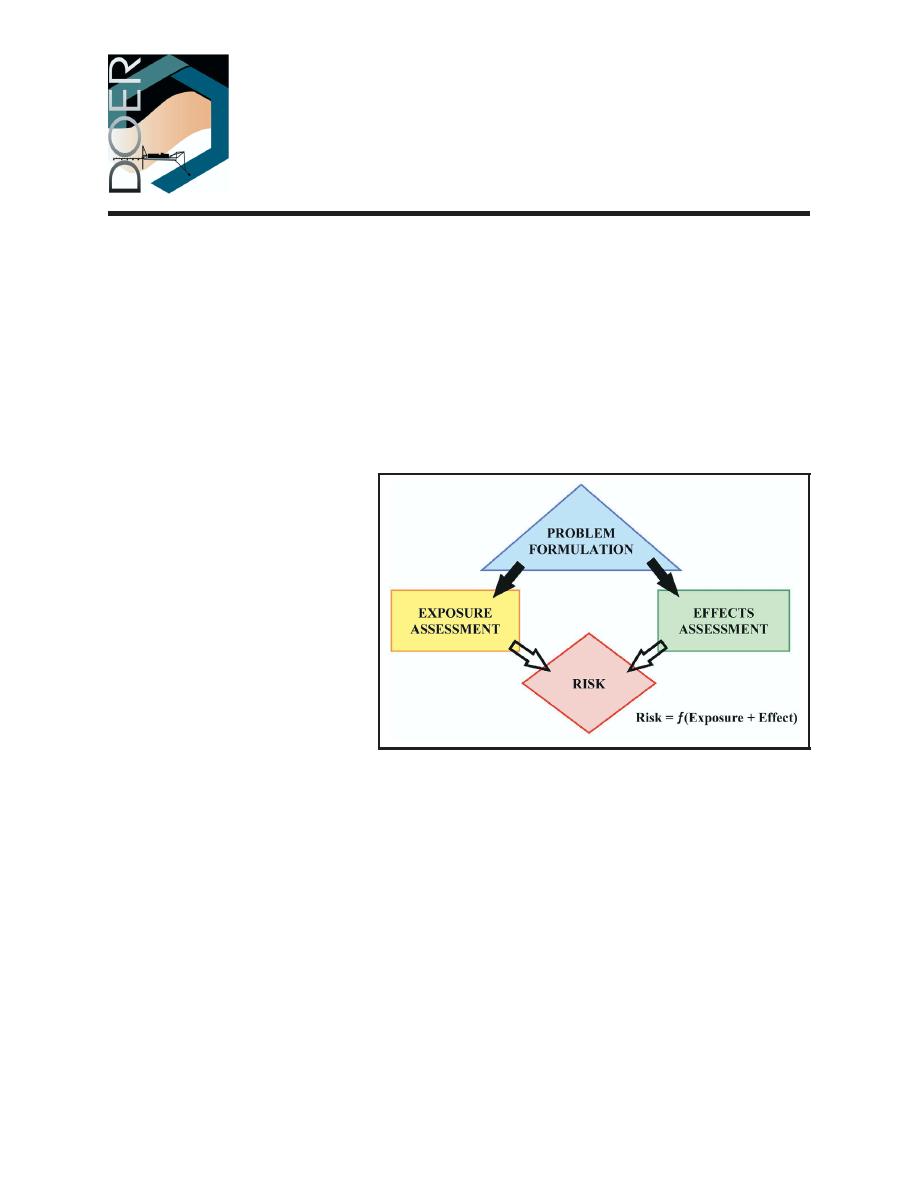 |
||
|
|
||
|
Page Title:
Implementation of Dredging Risk Assessment Modeling Applications for Evaluation of the No-Action Scenario and Dredging Impact... |
||
| |||||||||||||||
|
|
 ERDC TN-DOER-R2
December 2001
Implementation of Dredging Risk Assessment
Modeling Applications for Evaluation of the
No-Action Scenario and Dredging Impacts
PURPOSE: This technical note describes the development of Dredging Risk Assessment Mod-
eling Applications (DRAMA) for evaluation of the no-action scenario and the impacts of dredging
operations without consideration of disposal. Implementation templates for these scenarios use
existing dredging models to characterize exposure for the evaluation of potential human health and
ecological risk. The models selected have been incorporated into the Framework for Risk Analysis
in Multimedia Environmental Systems (FRAMES), a part of the Army Risk Assessment Modeling
System (ARAMS).
BACKGROUND: The risk assessment paradigm (Figure 1) is typically a problem formulation
leading to both exposure and effects assessments, which are integrated to perform a risk charac-
terization (Moore et al. 1998). The
basic premise is to calculate risk as
a function of both exposure, human
or ecological, and effects resulting
from exposure. The effects of con-
cern may result from short- or long-
term exposures.
The risk
assessment techniques for the
evaluation of dredging activities re-
quire exposure effects data and/or
predictions generated by models.
Exposure models are required to
predict exposures resulting from
proposed alternatives where expo-
sure data do not exist. The combi- Figure 1. U.S. Environmental Protection Agency risk
nation of the exposure and effect
assessment paradigm
components results in a calculated
risk characterization. Risk assessments are useful planning tools for the evaluation and determina-
tion of the impact of dredging and disposal alternatives on both human and ecological resources
(Moore et al. 1998).
Historically, there have been several options for conducting risk assessments. Perhaps the simplest
of these involves direct field measurements to estimate exposure concentrations for a given exposure
scenario. These direct exposure estimates are then compared to effects data to estimate a risk, e.g.,
a hazard quotient (U.S. Environmental Protection Agency (USEPA) 1992). One problem with this
method is the assumption that the exposure concentrations collected at the sample sites are
temporally constant. In addition, the spatial distribution of the exposure concentrations is generally
limited due to the expense of field measurements. To gain an understanding of the influence of time
and spatial variances upon the estimated exposure concentration (for a given exposure scenario),
|
|
Privacy Statement - Press Release - Copyright Information. - Contact Us - Support Integrated Publishing |